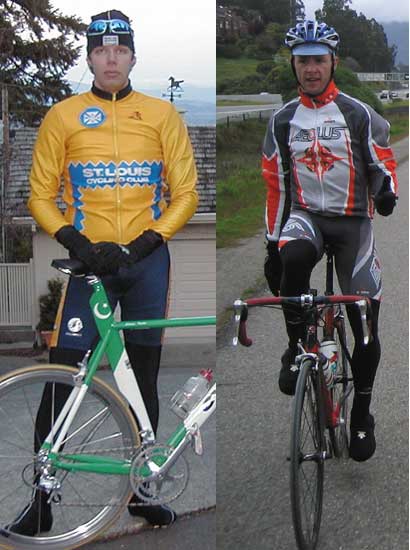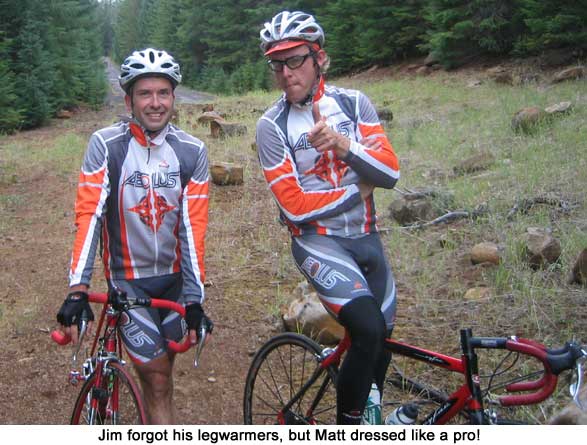The other day, while I was speaking with the athlete I have been coaching the longest, Tom W., we hit upon the subject of how to behave on a group road ride. While every ride is different, there are some basic rules to follow if you don't want to be pegged as dangerous or, worse, annoying. Depending on the amount of traffic, and the local laws, most groups ride single file or two-abreast. The latter makes for nice conversation and, when a group is large, makes it a bit quicker for cars to pass. Sometimes, though, a group simply has to ride single file. The following tidbits generally apply to both situations, so...
Rule #1: Be a good guest. If you are invited to ride with a new group, show up on time. Also, don't go immediately to the front and try to drop them. They probably invited you because they want to talk to you and get to know who you are and if they are constantly chasing you, that's impossible. Go for the occasional sprint (if they tell you it's coming), otherwise just relax and enjoy the ride.
Rule #2: Ride in a straight line. There are few things more frightening than someone in a group who has trouble holding a smooth line. Wobbly riding by one individual is magnified as you go down the line, so bend your arms and stay relaxed while making sure you aren't too close to the wheel in front of you. This brings me directly to...
Rule #3: Avoid braking constantly. One way to make sure you keep your distance from the wheel of the rider in front of you is to gently move to the left (in most of the Western world, except the UK) into the wind for a moment of two. Catching a bit of wind on your chest will often slow you down enough to avoid having to touch your brakes. This, in turn, brings me to...
Rule #4: When you are in front on a gentle descent, keep pedaling. The riders behind you are already coasting in this situation, and if you coast too, they will certainly have to brake. They may have to anyway, but if you keep a bit of pressure on, they will have to brake less and the whole group will stay happier.
Rule #5: Point out obstacles. This could easily be rule #1, because it is so important. When you see a hole/stick/gravel/car-pulling-out-of-driveway ahead, point it out to the riders behind you as you avoid it.
Rule #6: Look where you are going. We have all spent time, tongue hanging out, staring desperately at the rear hub of the rider in front, but that's racing! On a group spin, keep your eyes up and look ahead. Learn to gauge, without actually looking, the distance between your front wheel and the wheel ahead of you.
Rule #7: Stand up (like a Champion): Once in a while, it's nice to get up out of the saddle for a bit. When you do this, your bike naturally moves back a bit. So, to avoid taking out the fellow behind you, who is no doubt carefully observing rules #1-6, make sure you do it carefully by leaving a bit of room to the wheel in front before giving the pedals one hard push as you stand.
Rule #8: Warn your mates: If you are in the back and you hear a car approaching from behind, just say "Car back." If you are in front on a narrow road with no center line and you see a car approaching, say "Car up." If you are somewhere in the middle, pass it on. Simple!
Rule #9: Slow down after you rotate off the front: One thing I often see on group rides, even with supposedly experienced riders, is riders taking a pull and then pulling off only to stay at the same speed, forcing the next riders to go even faster. Naturally, this only works for so long before someone can't go that fast and the group begins to separate. So, when you rotate off the front, simply ease back a bit with the pressure you apply to the pedals. When everyone does this, a paceline flows smoothly and motion becomes poetry.
Rule #10: Share the road: Cars definitely don’t add to the fun of any ride (unless perhaps you are drafting one at speed), but we all use public roads, so we have to share. To that end, keep right (or left if you live in a place where they drive on that side), obey the rules of the road, be courteous, and ride predictably.
I am sure there are a few more pieces of advice which would qualify, and if you have any of your own (I am sure Erik V. does), then feel free to drop me a line and I will add them to the list. In the meantime, here is a start!




